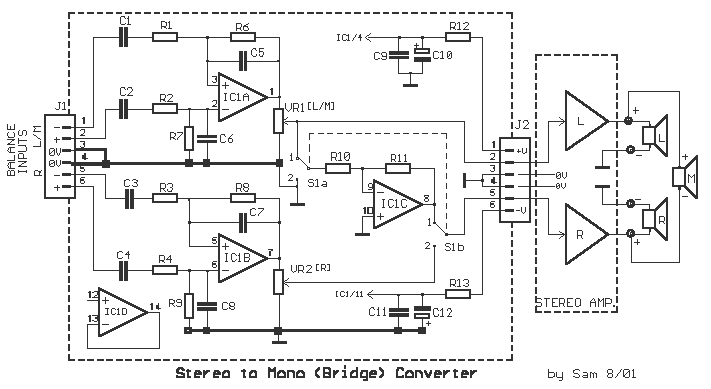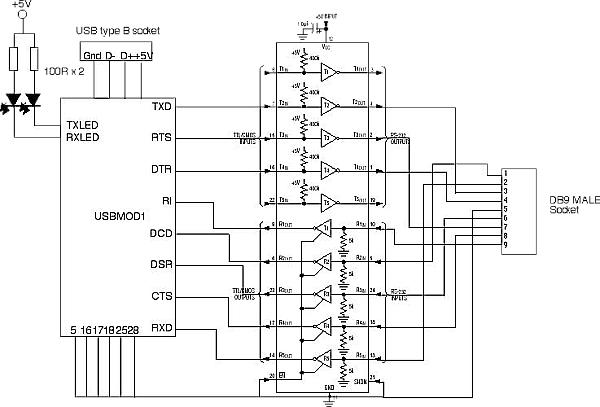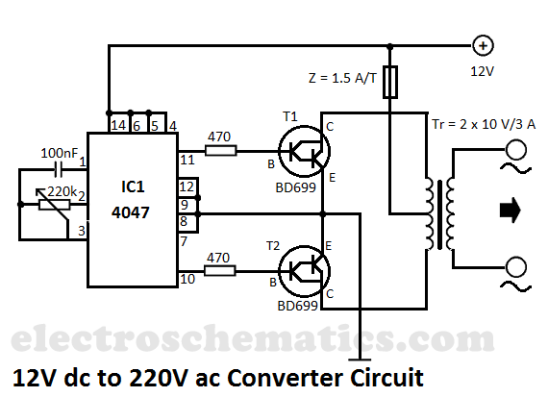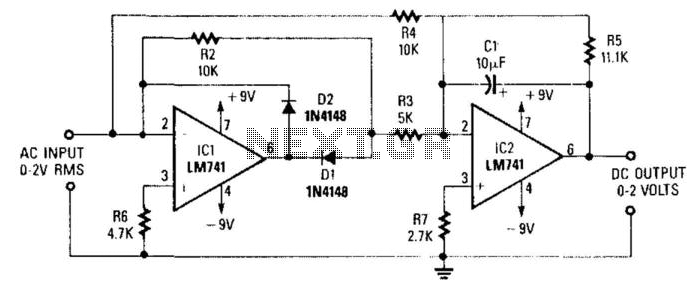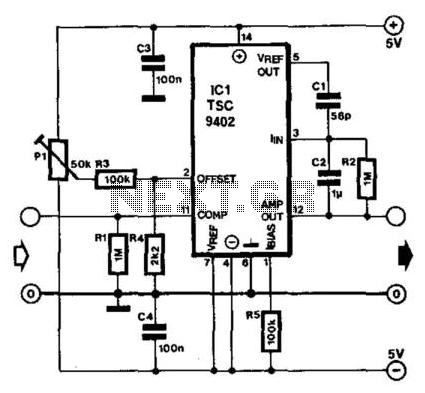
Anti-Log Converter
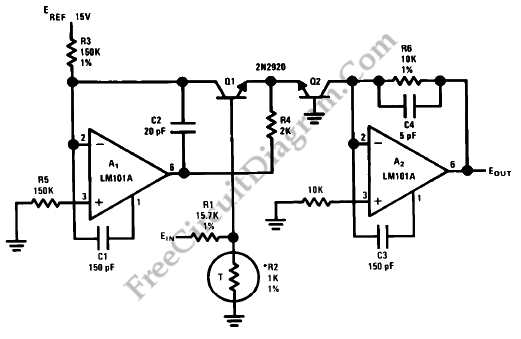
Anti-log or exponential generation involves rearranging logarithmic circuitry. The circuit diagram below illustrates the relevant circuitry.
Anti-logarithmic or exponential circuits are essential in various applications, particularly in signal processing and analog computing. These circuits typically utilize operational amplifiers (op-amps) configured in specific ways to produce an output that is exponentially related to the input voltage.
In a standard anti-log circuit, the configuration often begins with an op-amp in a feedback arrangement. The input signal is fed into the inverting terminal of the op-amp, while a diode is placed in the feedback loop. The diode's exponential current-voltage relationship is utilized to achieve the desired anti-logarithmic behavior. When a voltage is applied, the current through the diode is exponentially related to the voltage across it, effectively transforming the linear input signal into an exponential output.
To construct an anti-log circuit, the following components are typically required:
1. **Operational Amplifier (Op-Amp)**: A high-performance op-amp is necessary for accurate signal processing. It should have a wide bandwidth and low offset voltage to minimize errors.
2. **Diode**: A suitable diode, such as a silicon diode, is used in the feedback loop. The choice of diode affects the circuit's response time and range.
3. **Resistors**: Resistors are used to set the gain of the op-amp and to establish the input and output impedance. Their values will determine the scaling of the output signal.
4. **Power Supply**: A stable power supply is crucial for the op-amp to function correctly, ensuring that the output remains within the desired range.
The circuit can be analyzed using standard circuit analysis techniques, including nodal analysis or Kirchhoff's laws, to derive the relationship between the input and output voltages. The output voltage can be expressed as an exponential function of the input voltage, demonstrating the circuit's anti-logarithmic characteristics.
In summary, the anti-logarithmic circuit is a vital tool in electronics, enabling the conversion of linear signals into exponential forms, which is useful in a range of applications, including audio processing, sensor interfacing, and data conversion systems.Anti-log or exponential generation is simply a matter of rearranging the logarithmic circuitry. The circuit diagram below shows the circuitry of the log. 🔗 External reference
Anti-logarithmic or exponential circuits are essential in various applications, particularly in signal processing and analog computing. These circuits typically utilize operational amplifiers (op-amps) configured in specific ways to produce an output that is exponentially related to the input voltage.
In a standard anti-log circuit, the configuration often begins with an op-amp in a feedback arrangement. The input signal is fed into the inverting terminal of the op-amp, while a diode is placed in the feedback loop. The diode's exponential current-voltage relationship is utilized to achieve the desired anti-logarithmic behavior. When a voltage is applied, the current through the diode is exponentially related to the voltage across it, effectively transforming the linear input signal into an exponential output.
To construct an anti-log circuit, the following components are typically required:
1. **Operational Amplifier (Op-Amp)**: A high-performance op-amp is necessary for accurate signal processing. It should have a wide bandwidth and low offset voltage to minimize errors.
2. **Diode**: A suitable diode, such as a silicon diode, is used in the feedback loop. The choice of diode affects the circuit's response time and range.
3. **Resistors**: Resistors are used to set the gain of the op-amp and to establish the input and output impedance. Their values will determine the scaling of the output signal.
4. **Power Supply**: A stable power supply is crucial for the op-amp to function correctly, ensuring that the output remains within the desired range.
The circuit can be analyzed using standard circuit analysis techniques, including nodal analysis or Kirchhoff's laws, to derive the relationship between the input and output voltages. The output voltage can be expressed as an exponential function of the input voltage, demonstrating the circuit's anti-logarithmic characteristics.
In summary, the anti-logarithmic circuit is a vital tool in electronics, enabling the conversion of linear signals into exponential forms, which is useful in a range of applications, including audio processing, sensor interfacing, and data conversion systems.Anti-log or exponential generation is simply a matter of rearranging the logarithmic circuitry. The circuit diagram below shows the circuitry of the log. 🔗 External reference
